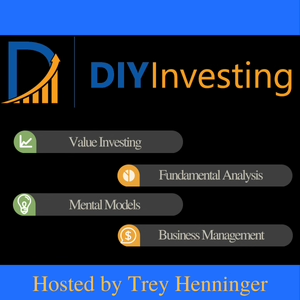
The DIY Investing Podcast
Trey Henninger
1 Listener
All episodes
Best episodes
Top 10 The DIY Investing Podcast Episodes
Goodpods has curated a list of the 10 best The DIY Investing Podcast episodes, ranked by the number of listens and likes each episode have garnered from our listeners. If you are listening to The DIY Investing Podcast for the first time, there's no better place to start than with one of these standout episodes. If you are a fan of the show, vote for your favorite The DIY Investing Podcast episode by adding your comments to the episode page.
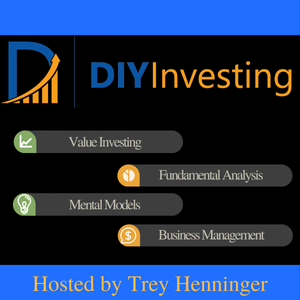
85 - Precisely Wrong, Roughly Right (DCFs)
The DIY Investing Podcast
07/27/20 • 36 min
- Discount Rates
- Gordon Growth Model
- Discounted Cash Flow Calculation
If you enjoyed this podcast and found it helpful, please consider leaving me a rating and review. Your feedback helps me to improve the podcast and grow the show's audience.
Follow me on Twitter and YouTubeTwitter Handle: @TreyHenninger
YouTube Channel: DIY Investing
Support the Podcast on PatreonThis is a podcast supported by listeners like you. If you’d like to support this podcast and help me to continue creating great investing content, please consider becoming a Patron at DIYInvesting.org/Patron.
You can find out more information by listening to episode 11 of this podcast.
Show OutlineThe full show notes for this episode are available at https://www.diyinvesting.org/Episode85
Why DCFs should not be used- What is a DCF?
- An estimate of all future cash flow (dividends or earnings) and discounted back to the present.
- When you add up these values you get the intrinsic value of a company.
- Gordon Growth Model (perpetual constant growth of a dividend - DCF)
- P = Div (next year’s) / (r-g)
- R = discount rate (10%)
- G = constant growth rate in perpetuity.
- Example:
- Dividend = $1.64 (Coca-Cola)
- Specific estimates: $27.85 (based on specific year estimates)
- Growth rate: 3% = $23.42 (equivalent to a 7% dividend yield)
- Growth rate: 5% = $32.80 (equivalent to a 5% dividend yield)
- Current price: approx. $46 per share
- Always invert.
- Dividend yield of 3.5% or growth rate of 6.5% in perpetuity.
- Example 2: P/E ratios for growing companies.
- I want to estimate how quickly I can reach a 10% earnings yield.
- I want it to be less than 5 years.
- Without compounding this means a 10% grower you can pay P/E of 15.
- A 20% grower you can pay P/E of 20.
- All of these imply you can sustain that growth for 5 years.
- Why ignore compounding? It’s simpler and conservative.
Discounted Cash Flow calculations and models provide precise estimates of intrinsic value but tend to be flawed. It is much better to improve accuracy by ignoring DCF and using a simple intrinsic value calculation like the Gordon Growth Model.
1 Listener
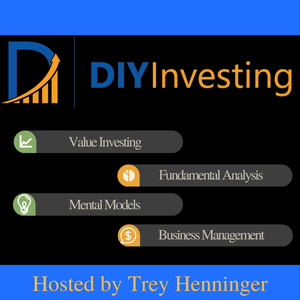
107 - Investing Goals for 2021
The DIY Investing Podcast
01/18/21 • 27 min
- Goals and Habits
- Concentration vs Diversification
- Signal vs Noise
If you enjoyed this podcast and found it helpful, please consider leaving me a rating and review. Your feedback helps me to improve the podcast and grow the show's audience.
Follow me on Twitter and YouTubeTwitter Handle: @TreyHenninger
YouTube Channel: DIY Investing
Support the Podcast on PatreonThis is a podcast supported by listeners like you. If you’d like to support this podcast and help me to continue creating great investing content, please consider becoming a Patron at DIYInvesting.org/Patron.
Show OutlineThe full show notes for this episode are available at https://www.diyinvesting.org/Episode107
2021 Investing Goals- Identify 2 new companies worthy of holding a 20% position in my portfolio
- Actually, build those new 10-20% positions by selling out of 2 of my current holdings. (I have already identified which ones to sell)
- Become more comfortable with high levels of concentration.
- My current largest holding is 35% of my portfolio. It's grown to this size from 20% and if all goes as I expect, it will likely continue to grow as a percentage of the portfolio. I need to become comfortable with 50% of my portfolio in a single stock if that company earns it through business performance.
- I may also sell 2 of my current positions before I have found the two new positions. Consequently, I need to tolerate holding less than 5 stocks for part of the year.
- Earn a 20% annual return for the year 2021.
- I earned a return of 22% in 2020, beating the S&P 500 by 3.7%.
- I believe I can match or exceed that return again this year.
- My discount rate is 10%, but that is used solely for the fundamental analysis portion of my stock analysis. With the current setup of my portfolio companies, I am often seeking 10% of the cash flows of the business, and an additional 10%+ from multiple expansion.
- I am optimistic that I can achieve this rate of return and perhaps substantially exceed it due to the types of companies I currently hold. We'll see how that comes to fruition.
- This is clearly an inferior goal as it is results based instead of process-based. I'm simply documenting it s that I have it as a reminder.
- Pass the Series 65 Exam
- Needed to become a Registered Investment Advisor
- Will allow me to take on clients interested in me managing their portfolio.
- If you'd like information about this and are perhaps interested in joining a waitlist, you can reach out for my information at my email: trey [at] diyinvesting.org
- Marketing Goals:
- 5,000 Twitter Followers (Currently just over 2k)
- 1,000 YouTube Subscribers (Currently just over 300)
- At least 1 outside investing client
- Useful research goals:
- Screen X number of companies this year (Say 100)
- Write-up 12 companies this year
- Read a 10k a day or a 10k a week, etc...
It used to be my goal during 2020 to move to only checking stock prices once a week.
Going forward, I will no longer have that as a goal. I have found that my focus on illiquid stocks means that I'm often monitoring stocks frequently because it takes a long time to build a stock position. If I had completed that prior goal, my results would have been worse.
Summary:In this episode, I outline my top investing goals for the new year. I aim to identify 2 new companies worth buying and my goal is to attain a 20%+ annual return for 2021. I also cover process-based goals relating to how to go about investing research. Finally, I would like to pass the Series 65 exam so that I can begin managing money for outside clients.
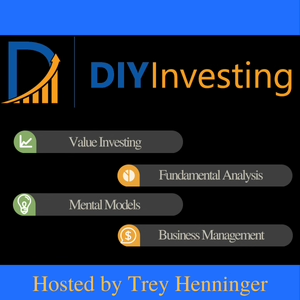
21 - Keystone Habits of a Healthy Lifestyle
The DIY Investing Podcast
04/07/19 • 23 min
This podcast was inspired by the book "The Power of Habit" by Charles Duhigg. You can support the podcast by purchasing the book through one of my affiliate links:
- Available in Hardcover
- Available in Paperback
- Available for Kindle
- Available as an Audio Book (from Audible)
*Disclosure: If you make a purchase through one of these links, I may earn a commission. This commission comes at no additional cost to you. Please understand that I have personally read all the books that I review. I recommend them because I believe they are helpful and useful, not because of any small commission I might receive. Please do not spend any money on these books unless you feel you need them or that they will help you achieve your goals.*
Keystone Habits of a Healthy Lifestyle- Exercise Regularly
- The definition of "regular" will vary by the person. The key is to exercise at least every week with a focus on multiple times per week.
- My personal goal is to exercise 6 times per week every week. This is as close to "daily" as I consider reasonable.
- The more often you exercise, the greater the results you'll gain from turning exercise into a keystone habit.
- Cook most of your meals at home from scratch
- Inspired by the books of Michael Pollan outlining how and why of eating healthy to promote a healthy lifestyle.
This is a podcast supported by listeners like you. If you’d like to support this podcast and help me to continue creating great investing content, please consider becoming a Patron at DIYInvesting.org/Patron.
You can find out more information by listening to episode 11 of this podcast.
Show Notes are available at DIYInvesting.orgThe full show notes for this episode, including my outline for today's podcast, are available at https://www.diyinvesting.org/Episode21
Please review and rate the podcastIf you enjoyed this podcast and found it helpful, please consider leaving me a review. Your feedback helps me to improve the podcast and also grow the show's audience.
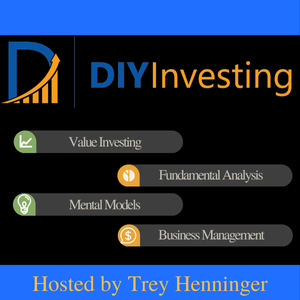
79 - How Banks Make Money
The DIY Investing Podcast
06/08/20 • 39 min
- Leverage
- Fractional Reserve Banking
- Margin
- Economies of Scale
- Operational Leverage
If you enjoyed this podcast and found it helpful, please consider leaving me a rating and review. Your feedback helps me to improve the podcast and grow the show's audience.
Follow me on Twitter and YouTubeTwitter Handle: @TreyHenninger
YouTube Channel: DIY Investing
Support the Podcast on PatreonThis is a podcast supported by listeners like you. If you’d like to support this podcast and help me to continue creating great investing content, please consider becoming a Patron at DIYInvesting.org/Patron.
You can find out more information by listening to episode 11 of this podcast.
Show OutlineThe full show notes for this episode are available at https://www.diyinvesting.org/Episode79
Banking Business Model - Key ConceptsAs some of you may remember, one of my goals for this year is to improve my understanding of bank stocks. Today’s podcast will focus on the basic business model that banks use to make money.
Key Concepts:
- Deposits
- Cost of Deposits
- Direct Cost: Interest Rates paid on Deposits
- Indirect Cost: Overhead (Employees, Rent, etc...)
- Loan Yields
- Loan Losses
- Fractional Reserve Banking -> Leverage Rate
- ROE = ROA * Leverage
- Banking Profits = Loan Yields - Loan Losses - Cost of Deposits - Overhead
- Recently watched: The Banker on Apple TV+
- Two black entrepreneurs in the 1960s buy two Texas banks.
- Samuel L. Jackson
- Anthony Mackie
The movie follows their journey and the ensuing blowback by Jim Crow.
One of the things the movie did very well was to explain the basic banking business model. Banks are easiest to understand when you focus on single branch banks instead of large money center banks like JP Morgan or Wells Fargo.
Summary:Banking is the business of bringing in deposits and lending them out.
Banking is a perfect example of a capital intensive business. A bank cannot grow unless it receives capital in the form of deposits. Deposits are the lifeblood of a bank and only through healthy deposit growth can a bank sustainably grow loans and therefore profits.
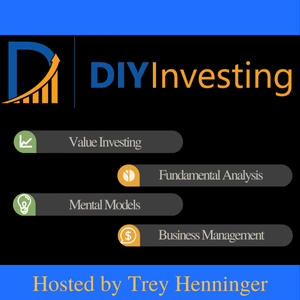
84 - Would you buy your employer's stock?
The DIY Investing Podcast
07/19/20 • 22 min
- Scuttlebutt
- Circle of Competence
If you enjoyed this podcast and found it helpful, please consider leaving me a rating and review. Your feedback helps me to improve the podcast and grow the show's audience.
Follow me on Twitter and YouTubeTwitter Handle: @TreyHenninger
YouTube Channel: DIY Investing
Support the Podcast on PatreonThis is a podcast supported by listeners like you. If you’d like to support this podcast and help me to continue creating great investing content, please consider becoming a Patron at DIYInvesting.org/Patron.
You can find out more information by listening to episode 11 of this podcast.
Show OutlineThe full show notes for this episode are available at https://www.diyinvesting.org/Episode84
Scuttlebutt Challenge: Your Employer's Stock- If your company isn’t public, assess it qualitatively or do this work on your spouse's company or where a friend works.
- If you work for a non-profit or government, do the same.
- Email me your write-up during the month of July 2020 and I'll send you a response.
- Assess the industry
- Assess your company’s place in the industry
- What is the culture of your company like?
- What is the priority of management? Are they shareholder friendly? Are they employee-friendly? Other concerns?
- How are capital allocation decisions made?
- How are CapEx decisions made?
- Does your company earn high returns on capital?
- Does it use leverage?
- In summary: Is it a high-quality business?
- What are the risks?
- How would you value your employer’s stock? (Write down an explicit intrinsic value)
The company you work for should be the first place you look to begin understanding how to perform scuttlebutt. Investors should analyze their employer's stock as a potential investment candidate. Culture, Quality, and Management are key areas.
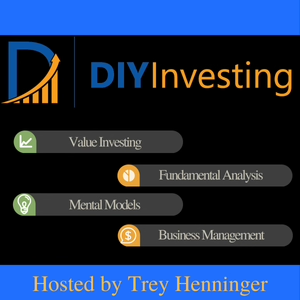
81 - Always Ask Why: Bond Returns, Greater Fool Theory, and the 5 Why Framework
The DIY Investing Podcast
06/28/20 • 31 min
- Discount Rate
- Greater Fool Theory
- Circle of Competence
- 5-Why Framework
If you enjoyed this podcast and found it helpful, please consider leaving me a rating and review. Your feedback helps me to improve the podcast and grow the show's audience.
Follow me on Twitter and YouTubeTwitter Handle: @TreyHenninger
YouTube Channel: DIY Investing
Support the Podcast on PatreonThis is a podcast supported by listeners like you. If you’d like to support this podcast and help me to continue creating great investing content, please consider becoming a Patron at DIYInvesting.org/Patron.
You can find out more information by listening to episode 11 of this podcast.
Show OutlineThe full show notes for this episode are available at https://www.diyinvesting.org/Episode81
Bond ReturnsIn the aggregate, bond returns cannot exceed the coupon rate of the bond. Your interest rate earned sets the maximum expected rate of return on that investment. Any potential for gains above this threshold is purely speculative in nature.
Greater Fool Theory- In today's bond bubble, the only way to justify purchasing bonds in a portfolio is a dependence on the greater fool theory.
- If you want or expect high returns from your bonds, then you hope that others are foolish enough to buy them from you before they mature.
Your circle of competence is probably smaller than you think.
5-Why FrameworkThis framework is used in the industry to evaluate failures for a root cause analysis. Basically, don't stop with understanding a problem after only asking "Why?" once. You need to dig deeper. Ask "Why?" five times, to reach down to deeper levels of explanation.
Find the root cause of a problem, not simply the surface contributing causes.
Summary:Investors should always ask why when evaluating investments. This includes understanding the underlying reasons for their investing strategy, why they earn an excess return, and the edge of their circle of competence.
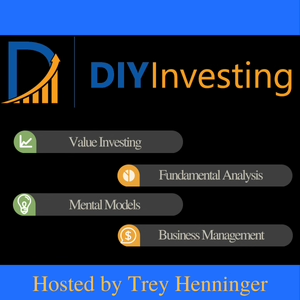
108 - Coffee Can Portfolio Investing
The DIY Investing Podcast
01/24/21 • 43 min
- Deferred Tax Liability
- Skin-in-the-game
If you enjoyed this podcast and found it helpful, please consider leaving me a rating and review. Your feedback helps me to improve the podcast and grow the show's audience.
Follow me on Twitter and YouTubeTwitter Handle: @TreyHenninger
YouTube Channel: DIY Investing
Support the Podcast on PatreonThis is a podcast supported by listeners like you. If you’d like to support this podcast and help me to continue creating great investing content, please consider becoming a Patron at DIYInvesting.org/Patron.
Show OutlineThe full show notes for this episode are available at https://www.diyinvesting.org/Episode108
Coffee Can Portfolio- Seeking "Never Sell" stocks - only certain companies qualify
- Benefits from a deferred tax liability (Can become quite significant over time)
- Preferable for individual investors. Hard to implement professionally
- An industry that lacks disruption risk
- Banking (Example)
- Stable and high returns on capital/equity (15% or higher)
- Long-term sustainable organic growth of at least 5% but preferably 10-15%. (You don't necessarily want 20%+ growers that will eventually lose all growth)
- Low competition, could be regulated monopoly or oligopoly
- Founder led company or a long-term CEO with skin-in-the-game
- Zero or low debt/leverage policies
- The ability to be a ten-bagger or a 100-bagger
- Usually small with the ability to grow large.
- A small competitor with a competitive advantage (cost perhaps) over larger competitors in a big market.
- Think early Walmart, Costco, Home Depot, GEICO
- Intelligent capital allocation strategies that benefit shareholders
- Lack of dilution
- Growing dividends or buybacks over time (Dividend Champion type stocks)
- Unless it is a roll-up strategy, an average to acquisitions can be helpful, because they often destroy shareholder value.
- You are a true business owner
- Judge your success by the performance of individual companies, not the overall portfolio return.
- Logical point: If every individual company compounds at 10% per year or more, then the portfolio as a whole by definition must also compound by at least 10% per year.
- Position sizing no longer matters. Your greatest winners may eventually become 50%, 75%, or 90% of your total portfolio. That's okay. That's how the strategy works. This is how the strategy outperforms.
- Buy one new stock a year, each year you work.
- Put all of your savings for the year into that company.
- Never sell.
- Ideally register for the shares in direct certificate form. It can be electronically held at a transfer agent, but after the year, don't hold the shares directly with a stockbroker.
- This limits your ability to sell the shares and is a huge psychological boost in implementing the strategy.
In this episode, I discuss the coffee can portfolio approach to investing. This investing strategy involves never selling a stock once it is bought. Therefore, you must seek high-quality companies with long runways for growth and high returns on capital.
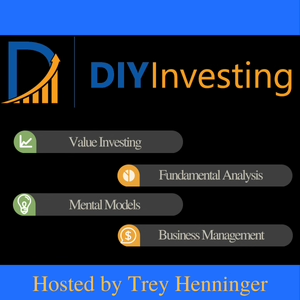
27 - How to calculate Intrinsic Value using Discounted Cash Flows (DCF)
The DIY Investing Podcast
05/19/19 • 29 min
If you enjoyed this podcast and found it helpful, please consider leaving me a review. Your feedback helps me to improve the podcast and grow the show's audience.
Support the Podcast on PatreonThis is a podcast supported by listeners like you. If you’d like to support this podcast and help me to continue creating great investing content, please consider becoming a Patron at DIYInvesting.org/Patron.
You can find out more information by listening to episode 11 of this podcast.
How to calculate Intrinsic Value using Discounted Cash Flows (DCF) - Show OutlineThe full show notes for this episode are available at https://www.diyinvesting.org/Episode27
What is Intrinsic Value?- The present value of all future free cash flows produced by a business.
- Cash today is worth more than cash in the future.
- Therefore, you need to discount future cash flows to be worth less than their stated value.
- Intrinsic Value = Owner's Earnings/(Discount Rate - Growth Rate)
- Discount Rates: 10% (nominal) or 6.5% (real)
- Growth Rates: Bounded between 0% and 5%
- Owner's Earnings: Manually calculated by adjusting Net Income
- When to use:
- Company is in a high-growth phase of its business (has not yet saturated the market)
- You are highly confident in short-term projections and the business is predictable
- Reported earnings have a lot of temporary adjustments that make the next few years not match the long-term
- When not to use:
- Almost always
- Why?
- Complex calculations can trick you into thinking you have a better understanding of the business than you do
- You'll likely rely heavily on growth and fast growth assumptions are very risky to make
- Part 1: Episode 23 - Discount Rates
- Part 2: Episode 25 - Long-Term Growth Rates
- Part 3: Episode 26 - Owner's Earnings
- Example Intrinsic Value Reports [$10+/month Patrons receive exclusive access]
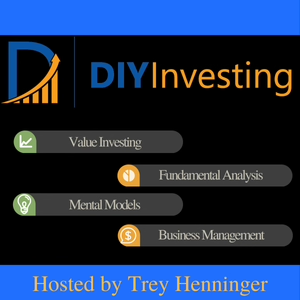
49 - Value Stock Geek Interview: Cheap and Good Balance Sheet ($MU, $BDL, $DKS)
The DIY Investing Podcast
11/03/19 • 77 min
- Follow his work on Twitter: @ValueStockGeek
- Check out his website:
If you enjoyed this podcast and found it helpful, please consider leaving me a rating and review. Your feedback helps me to improve the podcast and grow the show's audience.
Follow me on Twitter and YouTubeTwitter Handle: @TreyHenninger
YouTube Channel: DIY Investing
Support the Podcast on PatreonThis is a podcast supported by listeners like you. If you’d like to support this podcast and help me to continue creating great investing content, please consider becoming a Patron at DIYInvesting.org/Patron.
You can find out more information by listening to episode 11 of this podcast.
Show Outline: Interview with Value Stock GeekThe full show notes for this episode are available at https://www.diyinvesting.org/Episode49
Part 1: ValueStockGeek's Investing Process- Basket of Stocks (20-30 positions)
- Value: Cheap Stocks with Good Balance Sheets
- Uses multiple valuation ratio's but prefers "Acquirer's Multiple"
- EV/EBIT
- See Tobias Carlisle's book: The Acquirer's Multiple
- High portfolio turnover 50-100% churn every year
- Why the Quality factor reduces your returns
- How to improve your stock-picking success rate by focusing on the balance sheet
- Micron Technology ($MU) - Cheapest stock in the S&P 500
- Flanigan's Enterprises, Inc. ($BDL) - A microcap company that owns bars, restaurants, and liquor stores in Florida
- Dick's Sporting Goods ($DKS) - A retail company focused on the niche of outdoor sporting goods equipment
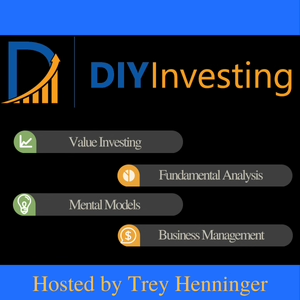
106 - When to Sell Stocks
The DIY Investing Podcast
12/29/20 • 39 min
- Opportunity Cost
- Rebalancing
- Coffee Can Portfolio
- Intrinsic Value
- Optionality
If you enjoyed this podcast and found it helpful, please consider leaving me a rating and review. Your feedback helps me to improve the podcast and grow the show's audience.
Follow me on Twitter and YouTubeTwitter Handle: @TreyHenninger
YouTube Channel: DIY Investing
Support the Podcast on PatreonThis is a podcast supported by listeners like you. If you’d like to support this podcast and help me to continue creating great investing content, please consider becoming a Patron at DIYInvesting.org/Patron.
Show OutlineThe full show notes for this episode are available at https://www.diyinvesting.org/Episode106
When should I sell stocks? (Question from Patron)There are a few key considerations:
- Opportunity Cost
- What else do you own?
- What is your current best idea? How much of it do you own?
- Trimming Positions
- I don't like doing this. All-or-nothing for me.
- There is a huge difference between selling into cash versus selling to buy a new stock
- Perhaps you consider selling to cash at a P/E of 35, but otherwise only sell if you have a better stock to put it in.
- I may be fine selling a stock at a P/E of 20 (that I think is worth 25) and buying a stock at a P/E of 5 (that I think is worth a P/E of 15). My return prospects are better.
You should sell a stock if you've made a mistake. If you were wrong about the thesis or your thesis has broken you should sell.
This is hard to do and I struggle to do so myself, especially if the price has fallen substantially.
Other Considerations:- Coffee Can Portfolio
- Seeking "Never Sell" stocks - only certain companies qualify
- Benefits from a deferred tax liability (can become quite significant over time)
- Preferable for individual investors. hard to implement professionally.
- Return Differential
- Don't sell a stock because a new idea is 1% better.
- You want at least a 5% return differential.
- Future returns are 5% when the new idea is 10%
- OR future returns are 10% when the new idea is 15%.
- Don't quibble over small differences because those differences are within your margin of error.
- Question from Patron: "Should I buy great companies during their growth phase and then sell when they lose their advantages?"
- A few problems here.
- It is difficult to predict when a company will lose its advantages.
- Likewise, once a company is recognized to have lost its advantages, usually, the price deterioration has already occurred.
- If you want to maximize profits, you likely need to sell BEFORE advantages have been lost.
- Positive Optionality and Selling Above Intrinsic Value
- It is almost impossible to accurately calculate intrinsic value.
- Consequently, it is likely a mistake to sell when a company reaches your calculated intrinsic value.
Many value investors lack a clear strategy on when to sell stocks in their portfolio. This decision ought to be based on opportunity cost, potential investment mistakes, intrinsic value, and return differential between old and new companies.
Show more best episodes

Show more best episodes
FAQ
How many episodes does The DIY Investing Podcast have?
The DIY Investing Podcast currently has 151 episodes available.
What topics does The DIY Investing Podcast cover?
The podcast is about Investing, Podcasts, Self-Improvement, Education, Business and Strategy.
What is the most popular episode on The DIY Investing Podcast?
The episode title '85 - Precisely Wrong, Roughly Right (DCFs)' is the most popular.
What is the average episode length on The DIY Investing Podcast?
The average episode length on The DIY Investing Podcast is 37 minutes.
How often are episodes of The DIY Investing Podcast released?
Episodes of The DIY Investing Podcast are typically released every 7 days.
When was the first episode of The DIY Investing Podcast?
The first episode of The DIY Investing Podcast was released on Aug 18, 2017.
Show more FAQ

Show more FAQ